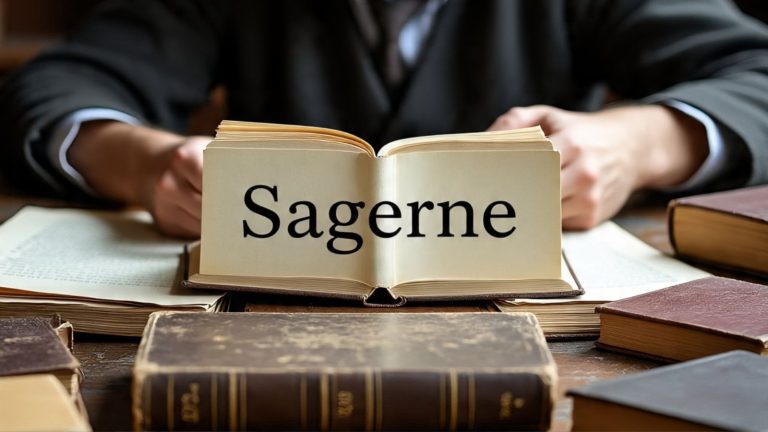The word “sagerne” might not come up in daily conversations, but it carries a unique weight in language, literature, and cultural studies. Depending on context, it can refer to narratives, stories, or statements—sometimes real, sometimes mythical, and often a blend of both.
For linguists and historians, the plural nature of the word suggests multiple accounts, emphasizing the diversity of perspectives within human expression. Like many linguistic terms with deep roots, “sagerne” has layers of meaning that extend across languages, disciplines, and cultural traditions.
This article explores the origins, usage, and broader significance of sagerne, unpacking its role in storytelling, history, and communication.
The Linguistic Roots of “Sagerne”
The word “sagerne” finds its origin in Scandinavian and Germanic languages, particularly Danish and Norwegian, where “sag” refers to a case, matter, or story. Adding the plural suffix “-erne” transforms it into “the stories” or “the matters.”
- In Danish, “sagerne” can mean the cases, often used in legal, historical, or narrative contexts.
- In a broader cultural sense, it can denote the stories—accounts passed down through speech, writing, or tradition.
Thus, linguistically, the term encompasses both factual reports and imaginative tales, making it flexible and multidimensional.
Sagerne in Historical Context
Throughout history, humans have preserved their experiences and beliefs in the form of stories and accounts. Sagerne represents this practice of collecting and sharing narratives.
In Nordic history, sagas were central to cultural identity. These sagas were not merely entertainment but also served as:
- Records of Events – Chronicling battles, travels, and political events.
- Moral Lessons – Teaching values, ethics, and cultural norms.
- Mythical Tales – Blending gods, heroes, and legends into communal storytelling.
The plural “sagerne” resonates with this tradition, highlighting the multiplicity of voices in cultural memory. It reminds us that history is not one story but many, overlapping and evolving.
The Dual Nature of Sagerne: Fact and Fiction
One of the most fascinating aspects of sagerne is its ability to blur the line between truth and imagination.
- As Facts – Sagerne can refer to documented accounts, such as legal cases, news stories, or official records.
- As Fiction – It can also signify myths, legends, and folktales that carry symbolic or cultural truths rather than literal ones.
This dual nature makes “sagerne” a term that accommodates both objective reality and subjective interpretation, reminding us that human expression often lies in the space between the two.
Sagerne in Modern Language
In today’s usage, “sagerne” might appear in:
- Academic Studies – Linguists, historians, and literary scholars use the term to refer to collections of texts, cases, or narratives.
- Legal Contexts – Referring to cases or matters under investigation.
- Storytelling Communities – Indicating shared stories, whether online, in literature, or oral traditions.
While not an everyday word for most, it carries precision and depth when applied in specialized contexts.
Why Sagerne Matters?
Understanding “sagerne” gives us more than just a definition—it opens a window into how people perceive and organize stories. Here are some key reasons why it matters:
- Preservation of Culture – Sagerne embodies the importance of keeping multiple narratives alive.
- Multiplicity of Perspectives – It reinforces that there is no single truth; instead, history and memory are layered.
- Connection Between Past and Present – Through stories and accounts, we connect with those who came before us.
- Tool for Communication – Whether factual or fictional, narratives are how humans explain the world and themselves.
Sagerne as a Collection of Narratives
At its core, sagerne represents the human instinct to collect and share narratives. From folktales passed around a fire to digital stories spread online, the plural nature of sagerne underscores that our lives are shaped by many voices, not one.
This collection can include:
- Family Histories – Stories passed down through generations.
- National Narratives – Accounts that shape a country’s identity.
- Personal Experiences – Everyday events that become stories we tell others.
- Global Myths – Legends and religious tales shared across cultures.
In this sense, sagerne reflects the shared human condition of storytelling—our need to make sense of life through words.
Challenges of Interpreting Sagerne
While sagerne captures the richness of multiple narratives, it also brings challenges:
- Bias in Stories – Not all accounts are neutral; they often reflect the perspective of the storyteller.
- Fragmentation – With so many stories, the truth can become fragmented or lost.
- Translation Issues – Meaning can shift across languages, making interpretation complex.
- Modern Overload – In today’s digital age, we are surrounded by countless “sagerne,” making it harder to distinguish fact from fiction.
These challenges remind us of the responsibility involved in interpreting and preserving narratives.
The Future of Sagerne
As the world becomes more interconnected, the concept of sagerne is evolving. Modern platforms—social media, digital archives, podcasts—are repositories of stories where countless voices contribute to shared histories.
The digital age has transformed sagerne into something global:
- Online communities create new myths and cultural narratives.
- Digital historians archive multiple versions of the same event.
- Artificial intelligence is now capable of generating narratives that join the collection of sagerne.
The future of sagerne lies in our ability to manage this abundance of stories responsibly, ensuring they enrich rather than divide.
Conclusion
So, what is sagerne? At its simplest, it refers to a collection of narratives, stories, or statements—sometimes factual, sometimes mythical, often both. Its linguistic roots in Scandinavian languages tie it to sagas and historical accounts, while its modern usage stretches across disciplines like law, history, and literature.


